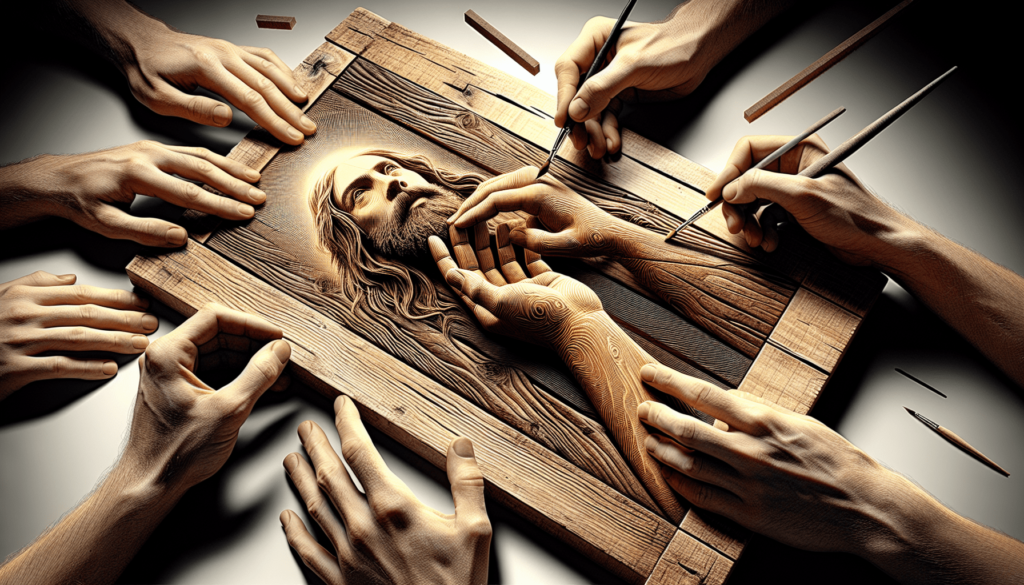What do you use to put words on wood? It’s something I’ve wondered about myself. Whether you’re attempting to create a sign for your home, a personalized gift, or perhaps a craft project for the kids, the challenge of transferring text to wood can be both exciting and a little daunting. But worry not, because it’s actually not as complicated as it might seem. Let’s embark on this wondrous journey together!

Basic Supplies You Might Need
Before we dive into the various methods, it’s essential to gather the supplies you’ll need. Think of these as the trusty sidekicks to your superhero-level DIY project.
Wood Surface
The first and most obvious requirement is the wooden surface. You can use anything from a wooden plaque from a craft store to a piece of driftwood you found on your last beach outing. The type of wood will affect the outcome, so choose wisely based on your desired aesthetic.
Factors to Consider:
| Wood Type | Characteristics |
|---|---|
| Pine | Softwood, easy to work with, absorbs stain well. |
| Oak | Hardwood, very durable, and has a prominent grain. |
| Birch | Smooth finish, light color, and even texture. |
| Reclaimed Wood | Unique character, may have imperfections. |
Primer and Paint
If you want a specific background color, you’ll need some paint and primer. A primer helps the paint adhere better and gives you a smoother finish, which is crucial for some of the more intricate methods.
Other Essentials
- Sandpaper for smoothing your wood
- A ruler for straight lines
- Painter’s tape to mask off areas
- Transfer paper, if needed
- A printer (for some methods)
- Sealant to protect your final piece
Methods for Putting Words on Wood
There’s more than one way to skin a cat, they say, although I’ve never quite been sure why anyone would want to do that. Regardless, the same goes for transferring words onto wood. Let’s review some popular methods.
Stencils
Using stencils is arguably the most straightforward and fool-proof method. It’s favored by many because it allows for a high degree of accuracy and neatness.
How to Do It:
- Place the stencil on your wood and secure it with painter’s tape.
- Use a fine-tip marker or pencil to trace the outline of your letters.
- Once traced, fill in the letters with paint using a small brush or sponge.
Pros and Cons:
| Pros | Cons |
|---|---|
| High accuracy and neatness | Limited by stencil designs |
| Easy to use for beginners | More time-consuming for intricate designs |
| Reusable stencils are cost-effective | Requires precision and patience |
Freehand
For the more artistically inclined, freehanding your words may be the way to go. It’s as simple as it sounds: you write or draw directly onto the wood.
Tips for Success:
- Lightly sketch your text in pencil first.
- Use a ruler to keep lines straight.
- Opt for a steady, slow hand to avoid mistakes.
Pros and Cons:
| Pros | Cons |
|---|---|
| Full creative freedom | Requires a steady hand and skill |
| No additional supplies needed | Can be challenging for complex designs |
| Quick and easy for simple projects | Mistakes are harder to correct |
Transfer Paper
Transfer paper is a clever little cheat that can save you a boatload of time. It works like carbon paper, allowing you to trace over a design and have it appear on the surface below.
Steps to Follow:
- Print your desired text.
- Place the transfer paper between your printout and the wood.
- Use a pencil to trace over the text.
- Go over the transferred lines with paint or marker.
Pros and Cons:
| Pros | Cons |
|---|---|
| Perfect for intricate and complex designs | Requires a printed template |
| Great for replicating fonts | Transfer paper can smudge |
| Fairly quick once set up | Additional cost for transfer paper |
Laser Engraving
For a professional and polished look, laser engraving stands out. It’s the method of choice for many commercial signs and high-end craft projects.
How It Works:
- You’ll need access to a laser engraver, often found in makerspaces or specialized stores.
- Create a digital design of your text.
- Load the wood into the machine and let it do the work.
Pros and Cons:
| Pros | Cons |
|---|---|
| Extremely precise and professional | Requires access to a laser engraver |
| Permanent and durable | Higher cost compared to other methods |
| Can handle complicated designs | Learning curve for using the software |
Wood Burning (Pyrography)
Wood burning adds a rustic, handcrafted touch to any project. This involves using a heated tool to burn the words onto the wood.
Steps to Master:
- Lightly sketch your text onto the wood.
- Heat up your wood burning tool.
- Carefully trace over the sketch with the hot tool.
- Go slowly to ensure even burning.
Pros and Cons:
| Pros | Cons |
|---|---|
| Unique, rustic aesthetic | Requires skill and practice |
| Permanent and durable | Time-consuming for large pieces |
| No paint or markers needed | Potentially hazardous due to hot tool |
Preparation is Key
Preparation is half the battle won, as the old saying goes. Ensuring your wood is ready can make a world of difference in the final outcome.
Sanding
First off, you’ll want to sand the surface of your wood. Sanding serves multiple purposes: it smoothens the wood, making it easier for your text to adhere and ensures an even surface for painting or burning.
Sanding Grit Guide:
| Sanding Level | Grit Range |
|---|---|
| Rough Sanding | 40 to 60 |
| Medium Sanding | 80 to 120 |
| Fine Sanding | 150 to 180 |
| Very Fine Sanding | 220 and up |
Priming
If you’re planning on painting your wood, use a good primer after sanding. This helps the paint stick better and results in a more polished finish. Primer is particularly useful for woods like pine, which can have a blotchy finish if painted directly.
Sealing
After you’ve completed your project, it’s a smart idea to seal it with a wood finish or sealant. This protects against moisture, wear and tear, and gives your project a professional touch.
Types of Sealants:
| Type | Characteristics |
|---|---|
| Polyurethane | Hard, durable finish, protects against scratches |
| Shellac | Natural finish, adds warmth to the wood tone |
| Lacquer | High gloss, quick-drying |
| Varnish | Resistant to abrasion and heat, great for outdoor use |
Mistakes to Avoid
Even the best of us fall prey to a few common pitfalls when it comes to transferring words onto wood. Here are some mistakes to steer clear of:
Skipping the Sanding
Think of sanding as the prep work you do for a fancy dinner. It’s tedious but necessary. Skipping this step can result in uneven lines and a less polished appearance.
Not Using a Primer
If you’re painting your wood, skipping the primer can make your paint job look blotchy and uneven. Trust me, it’s worth the extra step.
Rushing Through
The temptation to rush is real, especially when you’re eager to see the finished product. But patience really does pay off. Taking your time will result in a cleaner, more professional-looking finish.
Ignoring Safety Precautions
Methods like wood burning and laser engraving come with inherent risks. Always ensure you’re following safety guidelines to protect yourself and your workspace.

Practical Tips and Tricks
Here are a few nuggets of wisdom to help you along your journey. They’ve been gleaned from trial and error, late-night crafting sessions, and a lot of patience.
Pencil Guidelines
For many methods, starting with light pencil guidelines can be a game-changer. They’re easy to erase and give you a roadmap, which is especially helpful for freehanding or using transfer paper.
Test on Scrap Wood
Before diving into your main piece, test your method on a scrap piece of wood. This allows you to make adjustments before committing to your final project.
Use Quality Materials
Cheap paint or low-quality stencils can sabotage your masterpiece. Sometimes, investing a little more in high-quality supplies can make all the difference.
Protect Your Work Area
Mess is part of the process, but it doesn’t have to be an overwhelming one. Lay down newspapers, use drop cloths, and generally make sure your work area is prepared for a bit of creative chaos.
Conclusion
So, what do you use to put words on wood? The answer depends on your skill level, the tools you have at hand, and the look you’re going for. Whether you’re a novice armed with stencils or a seasoned pro with a laser engraver, the perfect method is out there waiting for you to discover. With a little preparation, patience, and creativity, that plain piece of wood can become a personalized work of art. Now, isn’t that something to talk about?
Happy crafting!

